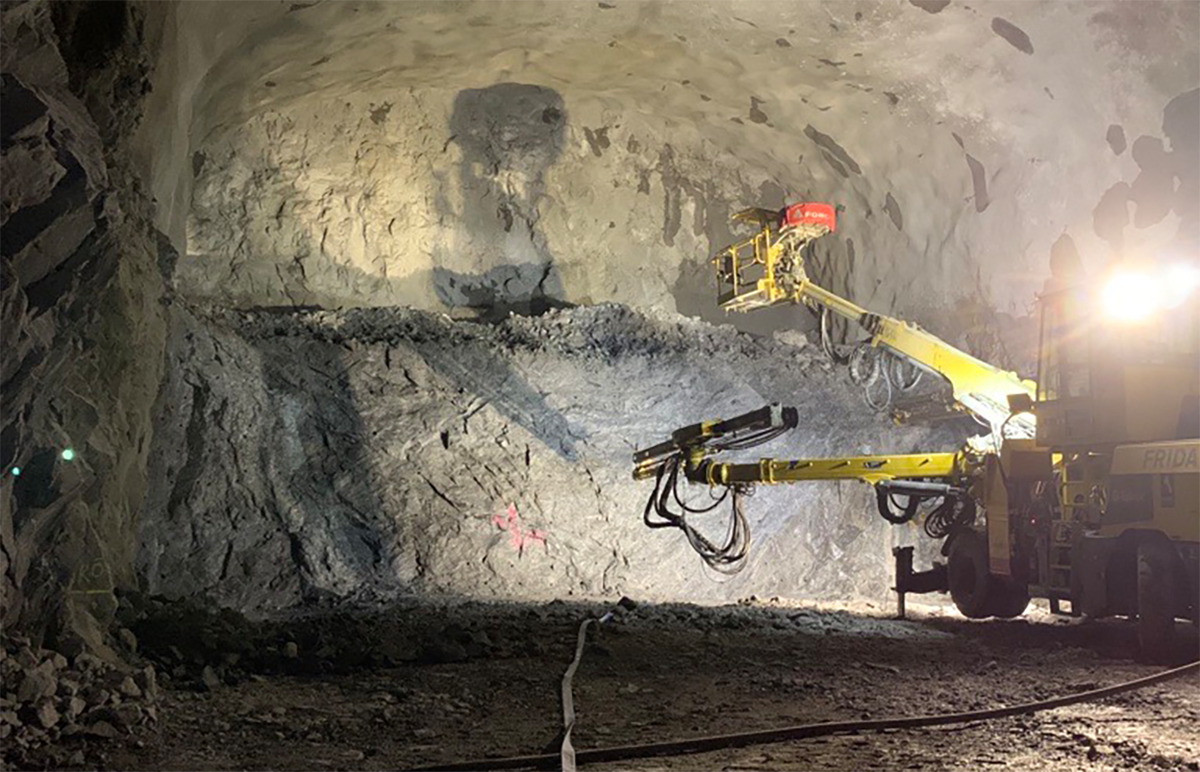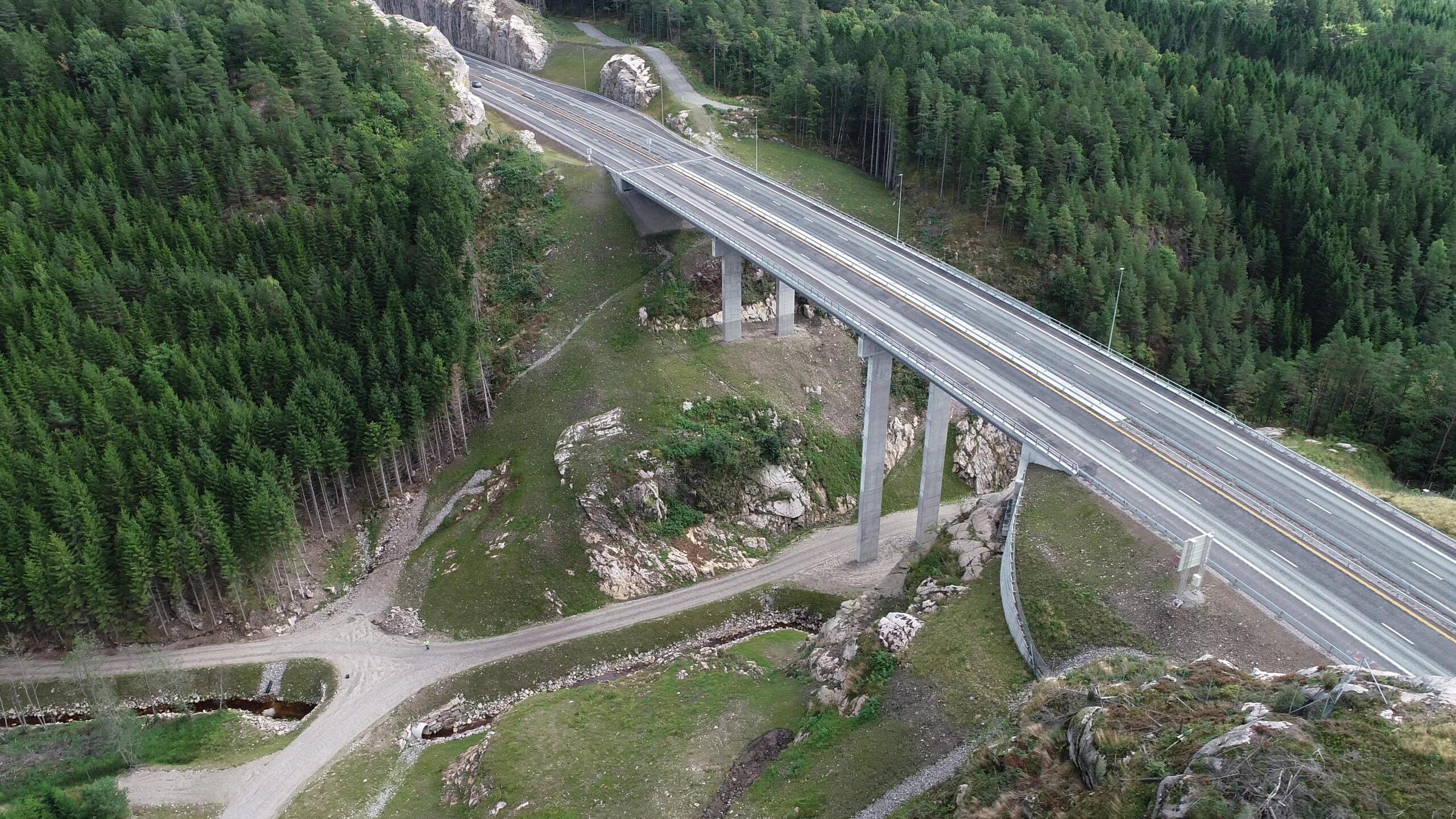CEEQUAL Excellent (82.3%) – Client and Outline Design Interim Award
Version 5, March 2021 | Stockholm, Sweden
Assessors: Kaisa Nugin & Erica Rodén, Region Stockholm
Verifier: Ric Collinson, Atkins
Client: Administration for Extended Metro, Region Stockholm
Designers: WSP, Rundquist Arkitekter AB
Project Summary
The extension of the Stockholm Metro is vital to make Stockholm a vibrant and accessible city with a sustainable public transportation network. Today, a quarter of Sweden’s population lives in Stockholm County, and every year this figure increases by 35,000 inhabitants. As one of the fastest growing regions in Europe there is an increasing demand for housing as well as improved public transportation.
The expansion of the metro is divided into seven projects. The Arenastaden project includes the extension of the Metro from Odenplan to Arenastaden in Solna, the so called “Yellow metro line”. The project includes a total of 4.1 kilometres track tunnel and three new stations: Hagastaden, Södra Hagalund and Arenastaden. Around 11,000 new residencies are being built near the new stations. When the “Yellow line” is completed, around 80,000 people will work in the nearby area.
The metro will be located below ground and the tunnels and platforms are constructed in rock. Only the entrances of the new stations will be visible above ground.
The art on the Stockholm Metro is often called the world’s longest art exhibition. All the new stations will get their very own features and art design. The art is important for making the environment interesting for commuters and memorable for visitors to the Stockholm area.
Key Facts

The Stockholm Metro will be extended by 4.1 kilometres.

All track tunnels will be constructed in rock.

670,000 cubic metres of solid rock will be blasted out.

37,000 cubic metres of concrete
will be used.

Operation of the extended lines is
planned for 2028.
Achievements
Project Management
Sustainability is an integrated part of the project, from localisation and early planning throughout construction. Competence in relevant sustainability issues has been present in the client’s project management as well as the management of the design team. A coherent team, which has been the core of the project from the start in 2014, has pushed sustainability issues and made tough decisions on planning and design to increase end user value. For example, the project has developed from the originally planned shuttle between Odenplan and Arenastaden, into a continued extension of the existing green metro line. Another example is the incorporation of a new metro station at Hagalund, making the metro accessible for the future residents of a one of Stockholms evolving townships.
On a more detailed scale, design features of the new metro stations ensuring user experience, accessibility and safety have been preserved, despite a strict economical budget and many compromises to keep projects costs within budget.
In Sweden, the legal requirements on infrastructure projects demands for a formal process including extensive investigations on the project’s impact on people and the environment as well as continuous consultations with stakeholders and the local community. However, the project management has pushed sustainability of the project to a level for beyond that stated by Swedish environmental law.

People and Communities
The extension of the metro line is a large-scale infrastructure project, which will affect a lot of people. The construction phase takes several years and is carried out in the densely populated area of Stockholm. As the construction phase is finished, the new metro line will constitute a vital part in the development of the Stockholm Region and will provide new opportunities for travelling within the Stockholm area.
A key to a successful project is the involvement of stakeholders and the local community throughout the planning and design process. Several surveys, investigations and assessments have been conducted as a basis for decisions on the localisation and design of tunnel tracks and metro stations as well as the decision on construction methods.
Activities to involve stakeholders and the community include open houses, meetings with stakeholders and the public, digital surveys, attitude surveys and newsletters. Consultations with the public have been conducted in various stages and in several places along the planned metro extension.
Investigations, reports and assessments have been available on Region Stockholm’s website for easy access to those concerned and anyone interested.
All opinions and comments have been evaluated by the project team to determine whether it entails revisions of the design works or methodology for implementation. Views are summarised and responded to in a consultation report, which is published on Region Stockholm’s website.
Land Use and Landscape
The process for choosing the location of track tunnels and metro stations has been extensive and has been conducted in accordance with the Swedish formal process for railway plans. The aim of the process is to find the localisation which provides the greatest benefits with least impact on environment and the community. Several alternative localisations have been evaluated with regards to factors such as availability and accessibility for future travellers, the environmental, geological and technical conditions as well as the impact on natural and cultural assets, existing structures and the development plans of affected municipalities.
The project is located in an urban area and all of the new tracks will be constructed in tunnels. Only the entrances of the new stations will be visible above ground. The locations of the new stations have been chosen to provide easy access for future passengers, and with as little negative impact as possible on natural and cultural assets, existing structures and the local community. Some of the stations will be constructed on the ground floor of new or old buildings and others in their own buildings.

The Water Environment
The project is not located adjacent to any water resources. However, as the project is located mainly below ground level it will impact water by the potential lowering of ground water levels. During the construction phase there will also be a discharge of process water and storm water.
Several protective measures are taken to prevent the effect on ground water levels including grouting of tunnels and infiltration of water. Buildings located within the project’s immediate environment are inventoried based on their sensitivity to groundwater lowering. Groundwater levels are continuously monitored in accordance with a comprehensive control program.
During the construction stage both storm water and process water undergo wastewater treatment before discharge and control measures are in place. During the future operations of the metro line, there will be a permanent water treatment plant in place for drainage water. The design allows for drainage water to be led to infiltration wells and be used to refill groundwater.
Since the project is below ground there are few hard surfaces that generates water runoff. The only new building constructed will have a green roof that can retain runoff.
Physical Resources
The use and management of physical resources has been integrated in project management throughout the project, from early planning and localisation throughout construction.
During the planning and design aspects such as resource efficiency, accessibility and user value have been integrated in the process in order to find the best solutions possible. For example, to increase accessibility for travellers, the project was developed from a shuttle between Odenplan and Arenastaden to a continued extension of the existing green metro line. Another example to increase the resource efficiency is the incorporation of a new metro station at Hagalund, making the metro accessible for the future residents of a one of Stockholm’s evolving townships.
During design and construction, the project team has worked with action plans for increased resource efficiency and limited climate impact. Calculations have been made of the resulting effect of taken actions as well as the estimated carbon footprint of the various project phases.
To prevent the use of chemicals and construction materials containing hazardous chemical substances, the Swedish system “Byggvarubedömningen” has been used. All chemical products and construction materials are logged and evaluated based on their content of hazardous chemical substances as well as percentage of renewable materials, reused materials, emissions, renewable energy during manufacturing, and packaging methods.
Several trainings and workshops have been conducted with staff from the client’s organisation as well as with designers and the construction workforce. The workshops have resulted in actions as well as increased knowledge and awareness about the project’s impact and possibilities for improvements throughout the project phases and organisation.

“I am proud of the willingness to take on challenges within the project team! It is the creativity and agility of the team members that lay the foundation for a sustainable Metro.”
– Malin Harders, Project Director, Arenastaden
CEEQUAL’s Role
What were the main challenges for the project and how were these overcome?
The main challenge for the project was to design and construct a metro in a densely populated urban area, affecting the possibilities for design as well as methods for construction. Extensive consultations with stakeholders and local community, from early planning throughout construction, was the key to overcome this challenge and make the project possible.
What were the drivers and perceived benefits for undertaking a CEEQUAL assessment?
CEEQUAL has provided a framework for dialog on sustainability issues between the projects within the Administration of the extended Metro as well as between stakeholders within each project. The use of CEEQUAL has also enabled sustainability performance of the project to be measured against international standards and has facilitated in creating a systematic and integrated sustainability work.
How did the use of CEEQUAL influence the outcomes of the project?
In Sweden, the planning and execution of infrastructure projects is regulated by Swedish law, which means that the project’s impact on stakeholders, the local community and the environment is investigated and mitigated. CEEQUAL has provided the framework for working with sustainability aspects, which are not regulated by Swedish law as well as to raise the general level of performance in sustainability.
What elements of this project highlight best practice and innovation?
Sustainability has been an integrated part of the core of the project and the project management. All parties engaged in the project have signed a contract for cooperation, which stipulates sustainability as one of the focus points. This has influenced the cooperation of all engaged in the planning and design of the Metro extension.
CEEQUAL insights and case studies
Browse the latest insights, thinking and case studies from CEEQUAL

Stockholm Metro Nacka project awarded Excellent

Stockholm Metro Sofia access tunnel a BREEAM Infrastructure success

Stockholm Extended Metro access tunnel Sundstabacken achieves CEEQUAL Excellent rating

Preparatory works for the new water treatment system in Oslo achieves BREEAM Infrastructure Excellent rating

E39 Mandal øst – Mandal


